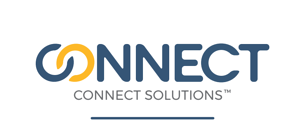Use Case: Micro Learning
This form of learning is about imparting knowledge in the smallest portions. A free ebook about this topic can be downloaded at the end of the page.
Table of Contents
What is Micro Learning?
Micro Learning – this form of learning is about imparting knowledge in the smallest portions. These are “microscopically” small compared to other common learning formats. A learning unit usually lasts little more than two to five minutes.
Classical formats for Micro Learning are:
- Short videos
- Interactive videos
- Whiteboard animations
- Information graphics
- E-books
- Interactive PDFs
- Wikis
- Blogs
- Chats with experts
- Quizzes
In very fast moving industries Micro Learning offers several advantages. Both here and there, specifications, regulations or work steps change quickly. It is all the better if affected persons can quickly inform themselves in the event of important innovations that have an immediate effect on treatment methods or the handling of guests. By means of Micro Learning, employees in such agile areas always remain up-to-date.
Micro Learning: Advantages
Microlearning combines many advantages:
- New knowledge can be developed at short notice during working hours and implemented immediately.
- With Micro Learning, existing knowledge gaps (the famous skills gap) can be quickly and precisely closed.
- Microlearning takes into account a wide variety of formats and is suitable for all types of learners.
- Time-saving: The individual learning units are so short that they can be completed quickly and knowledge can be implemented effectively in a short time.
Micro Learning: Challenges
Communicating urgent knowledge quickly is a challenge. Most employees move back and forth during their work – without fixed access to a laptop or computer. However, most Micro Learning units are tied to a digital device. In very agile sectors, learning units can also be easily shared via an employee app. Then they can be accessed independently of time and place.
Micro Learning: Requirements
In certain working environments, it is a prerequisite to share knowledge in a very targeted and tailored way with exactly those employees for whom it is relevant.
For the following reasons:
- For example, when the staff work in very different specialist areas and not every new finding is relevant for everyone. Anyone who is overwhelmed with too much knowledge that is not interesting for him or her quickly feels that this is spam and loses interest in the learning format.
- In such a case, the company should think about optimal technological conditions such as an employee app that enables the targeted sharing of learning units.
- Learning units should be quickly designed and made available within the app.
- It should be possible to use the applications in different learning situations such as seminars, workshops or individual learning.
Micro Learning: Risks
Anyone who cannot use a laptop or PC for microlearning because they are constantly on the move or do not have a fixed workplace in their everyday work life will use a smartphone to access knowledge. If things have to happen very quickly, chatting with a colleague from the subject is the method of choice. This is also part of Micro Learning.
Three-quarters of the Swiss use the Messenger WhatsApp as their preferred service for sending messages. On average, the Swiss send up to 34 WhatsApp messages daily. One in ten even send more than 100 per day. However, communication is mainly private, but in some cases also professional. This is the result of a non-representative study on social media use in Switzerland conducted by the marketing agency xeit.
Attention: In a professional environment it is better to send messages via an employee app that is suitable for business use. Because from a data protection perspective, the use of WhatsApp is critical in several respects.
For this very reason, Winterthur teachers, for example, are no longer allowed to use WhatsApp to arrange a meeting. The city’s central school administration has imposed an absolute WhatsApp ban on schools, reports the teachers’ umbrella organization: Most cantonal data protection officers share this attitude and also advise against using WhatsApp for professional communication.
What exactly is the problem? The fact that WhatsApp’s servers are located in California, USA, and therefore do not comply with European data protection regulations, contributes to the critical assessment. Not only the data sent via WhatsApp, but also the telephone number required to log on to WhatsApp, as well as all contacts in the telephone book of a WhatsApp user, end up on the US server. This is a clear violation of the data protection laws applicable in this country.
But there’s more:
- If a contact changes his or her number without informing the sender, internal information can be sent to the wrong recipient as soon as the number is reassigned.
- Employees who leave the company are often not removed from the internal WhatsApp chat. This gives them information that is not meant for their eyes.
- If critical photos are transmitted, there is a risk that they will automatically be stored in the recipient’s personal cloud environment.
- Unauthorized third parties from the private environment of the recipient may then have access to this data.
Closing words
So let’s recap: Today, knowledge must be exchanged quickly, continuously, in the right doses and in the right form – and preferably via smartphone, regardless of time and place. Then employees are always up-to-date and can perform their tasks perfectly.
These are many demands at once. At the same time, data protection must also be taken into account. This excludes the use of apps that are intended for private use. They do not meet the high standards that apply in Europe.
What sounds like squaring the circle can be solved completely with a single employee app. There are solutions for business use that can be used to implement all aspects of social learning. Such an employee app opens up the possibility of quality-enhancing knowledge exchange with individual employees, groups of employees or all employees.


